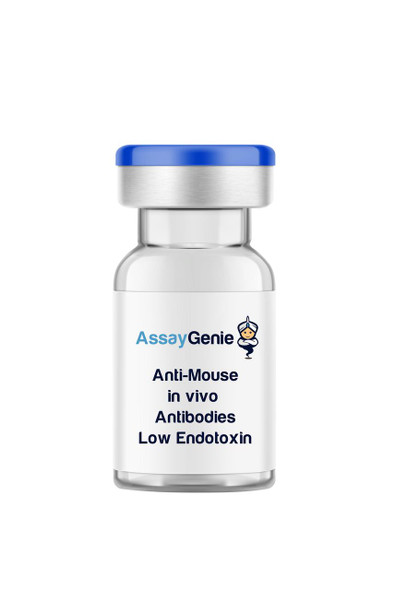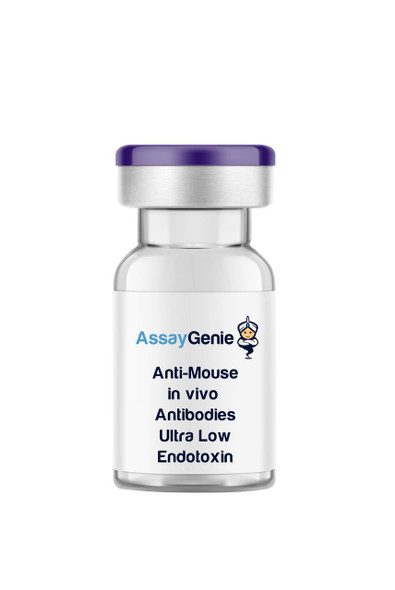Description
| Product Name: | CD96 Rabbit pAb |
| Product Code: | CAB20547 |
| Size: | 50uL, 100uL |
| Synonyms: | TACTILE |
| Applications: | WB |
| Reactivity: | Human |
| Host Species: | Rabbit |
| Immunogen: | Recombinant fusion protein containing a sequence corresponding to amino acids 270-370 of human CD96 (NP_937839.1). |
| Applications: | WB |
| Recommended Dilutions: | WB 1:500 - 1:2000 |
| Reactivity: | Human |
| Immunogen: | Recombinant fusion protein containing a sequence corresponding to amino acids 270-370 of human CD96 (NP_937839.1). |
| Purification Method: | Affinity purification |
| Storage: | Store at -20°C. Avoid freeze / thaw cycles. Buffer: PBS with 0.02% sodium azide, 0.05% BSA, 50% glycerol, pH7.3. |
| Isotype: | IgG |
| Sequence: | Email for sequence |
| Gene ID: | 10225 |
| Uniprot: | P40200 |
| Calculated MW: | 65kDa |
| Observed MW: | Refer to figures |
| UniProt Protein Function: | CD96: May be involved in adhesive interactions of activated T and NK cells during the late phase of the immune response. Promotes NK cell-target adhesion by interacting with PVR present on target cells. May function at a time after T and NK cells have penetrated the endothelium using integrins and selectins, when they are actively engaging diseased cells and moving within areas of inflammation. Defects in CD96 are a cause of C syndrome (CSYN); also called Opitz trigonocephaly syndrome. This syndrome is characterized by trigonocephaly and associated anomalies, such as unusual facies, wide alveolar ridges, multiple buccal frenula, limb defects, visceral anomalies, redundant skin, psychomotor retardation and hypotonia. A chromosomal aberration involving CD96 has been found in a patient with C syndrome. Translocation t(3;18)(q13.13;q12.1). CD96 gene was located at the 3q13.13 breakpoint. Precise structural analysis around the breakpoint showed that the gene was disrupted by the translocation in exon 5, probably leading to premature termination or loss of expression of CD96 protein. No gene was detected at the chromosome 18 breakpoint. 2 isoforms of the human protein are produced by alternative splicing. Protein type: Cell adhesion; Membrane protein, integral Chromosomal Location of Human Ortholog: 3q13.13-q13.2 Cellular Component: integral to plasma membrane; plasma membrane Biological Process: cell adhesion; immune response; regulation of immune response Disease: C Syndrome |
| UniProt Protein Details: | |
| NCBI Summary: | The protein encoded by this gene belongs to the immunoglobulin superfamily. It is a type I membrane protein. The protein may play a role in the adhesive interactions of activated T and NK cells during the late phase of the immune response. It may also function in antigen presentation. Alternative splicing generates multiple transcript variants encoding distinct isoforms. [provided by RefSeq, Jan 2016] |
| UniProt Code: | P40200 |
| NCBI GenInfo Identifier: | 161784352 |
| NCBI Gene ID: | 10225 |
| NCBI Accession: | P40200.2 |
| UniProt Secondary Accession: | P40200,Q5JPB3 |
| UniProt Related Accession: | P40200 |
| Molecular Weight: | |
| NCBI Full Name: | T-cell surface protein tactile |
| NCBI Synonym Full Names: | CD96 molecule |
| NCBI Official Symbol: | CD96 |
| NCBI Official Synonym Symbols: | TACTILE |
| NCBI Protein Information: | T-cell surface protein tactile |
| UniProt Protein Name: | T-cell surface protein tactile |
| UniProt Synonym Protein Names: | Cell surface antigen CD96; T cell-activated increased late expression protein; CD_antigen: CD96 |
| Protein Family: | T-cell surface protein tactile |
| UniProt Gene Name: | CD96 |
| UniProt Entry Name: | TACT_HUMAN |






